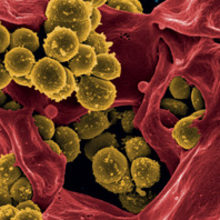Best of the blog
Issue: Water
17 November 2014 article

As we come towards the end of yet another year, it’s time to look back over a busy summer of science on the Society’s blog Microbe Post. We’ve had some great stories over the past few months, no more so than our write-up of the emerging arbovirus, Chikungunya. Its name means ‘that which bends up’ in the language of the Makonde people of Tanzania and Malawi, in reference to the severe joint and muscle pain that the virus can cause. Chikungunya has now been transmitted within the USA, making the disease of much interest to public health of officials across the world.
Also in the news a lot over the past few months has been the terrible Ebola outbreak affecting many countries in West Africa. Shortly after the outbreak began, we spoke to Dr Derek Gatherer from Lancaster University, who explained to us what the virus is and how it is spread to others.
Earlier in the year, NESTA launched the Longitude Prize to much media fanfare. After a vote, the British public decided that the prize should focus on the rise of antibiotic resistance. Shortly after the announcement, Peter Cotgreave, the Society’s Chief Executive, wrote about his thoughts on the prize and of an announced funding call from the Research Councils. Later in the summer, Joshua Ryan-Saha, Assistant Manager of the Longitude Prize, wrote a post for us giving some more details on what the prize hopes to achieve.
In July I got to record what might be my most favourite interview. I went down to Kew Gardens to interview Dr Bryn Dentinger, one of the world’s experts on porcini mushrooms. Bryn was working on a paper in which he reported discovering some new species of mushrooms in a packet of dried porcini he’d bought at a local shop.
Continuing the food theme, Jon Fuhrmann investigated whether Panama disease – caused by the fungus Fusarium oxysporum – will cause the end of the banana, as we know it. Finally in this round-up, Jon spoke to Dr Adrián Pinto-Tomás from the University of Costa Rica to learn about how the pathogenic fungus Escovopsis might be used as a biocontrol method for leafcutter ants.
BENJAMIN THOMPSON
Public Relations Manager
[email protected]
Image: False-coloured scanning electron micrograph of meticillin-resistant Staphylococcus aureus (yellow) and a dead human neutrophil (red). NIAID..


